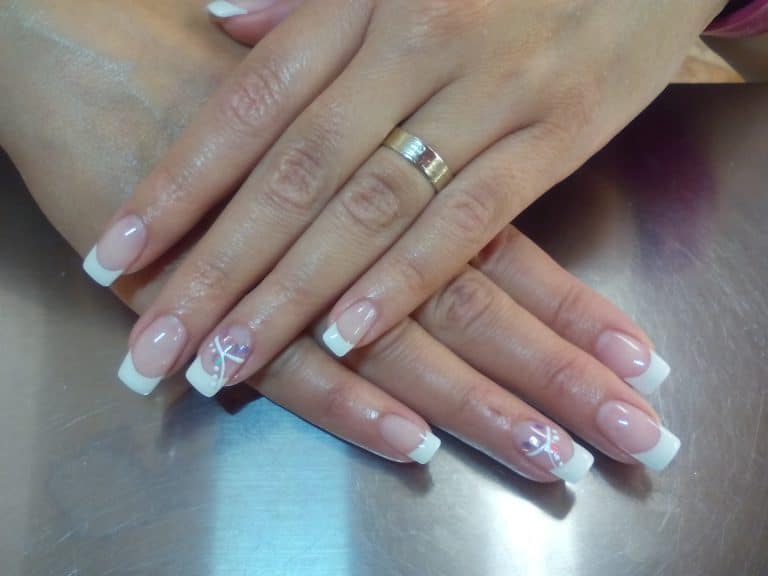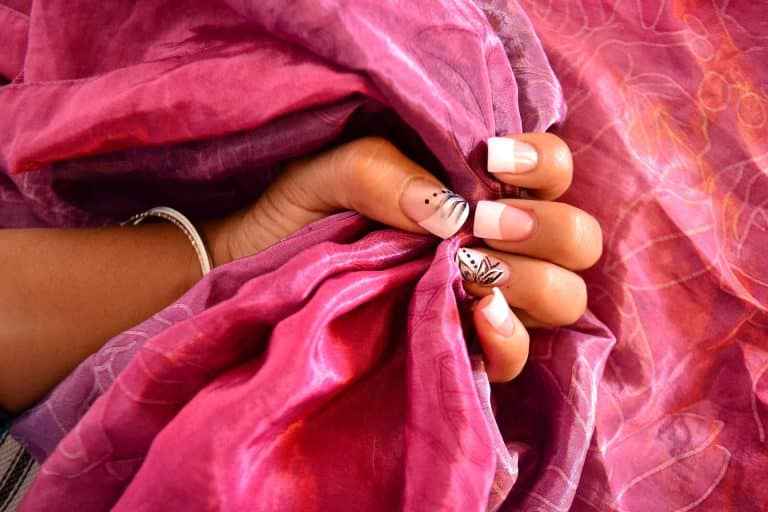Guide to the most popular types of manicures. Which one will be best for you?

If you are a manicure fanatic, then you can probably recite the difference between gels and shellacs when awoken in the middle of the night. However, for casual nail salon visitors and absolute beginners, all these techniques can sound quite intimidating. But worry no longer! We’ve prepared a handy guide to the most common nail services so that you can decide which to choose during your next appointment!
Table of Contents
What is a manicure?
Let’s start with the basics. What even is a manicure? Usually, it is broadly defined as a beatifying hand treatment. Although we usually think that a manicure = colourful nails, it’s not always the case. Depending on your personal taste and the type of manicure you choose, you can either finish the treatment by having your nails painted, or simply have them trimmed and shaped.
Basic manicure
Don’t let the name fool you – a basic manicure is nothing short of exciting! The term “basic” refers to the fact that it is a standard version of the procedure, consisting of its most essential parts. It’s the most natural manicure if you decide to keep things simple, but of course, nothing stops you from asking for a colourful polish as well. With a basic manicure, you are usually up for:
- Trimming, buffing & shaping the nails
- Managing the cuticles
- Moisturizing hand cream/mask
- Nourishing cuticle oil
- A basic application of a traditional nail polish
With a basic manicure, you can usually choose a singular nail colour, a transparent nail conditioner or a very simple design (eg. french or reverse french). If you visit a spa for your manicure, you can probably count on an additional hand massage for even more relaxation!
The pros of a basic manicure
- You can get it done relatively quickly
- It’s less expensive than gels, acrylics or shellacs
- It does not have any negative impact on your nails
- You can easily remove the nail polish at home once it starts looking worse for wear and/or you get tired of it
- You can achieve nice, natural-looking nails by either asking for a nude polish or transparent conditioner
The cons of a basic manicure
- It’s not as long-lasting as gels, acrylics or shellacs – you may need to remove it after a week or so
- It requires some patience in the drying process (as opposed to the techniques where the formula is set by the UV lights)
Gel manicure
Gels are arguably the most popular types of manicures. Known also as hard gel nails, they quickly took over the nail art world due to their beauty, durability and long-lasting quality. Furthermore, gel nails look very natural, so are great even for those of us who are not fans of bold colours. For example, gel french manicures really spiked in popularity recently!
If you book a gel nail manicure, apart from the traditional elements such as trimming, buffing & shaping, managing cuticles and nourishing the plates, you will be asked to choose a nail colour or design and then have your nails painted. The nail tech will not use a regular polish, but a special gel polish for your manicure, which will then harden thanks to a UV/LED curing lamp.
The pros of a gel manicure
- It will stay with you for longer – gel nails are sturdy and long-lasting, and you can have a set of gels even for 2-3 weeks.
- You can opt for gel nails that are natural or colourful and complicated in design – the technique supports all styles
- Gels can also extend your natural nails, for example, if you want to try longer nails but lack patience for growing them, and are arguably the most natural-looking types of nail extensions.
The cons of a gel manicure
- It’s much more pricey than a basic one
- Removing gel nails requires another visit to the salon, as it’s difficult (and risky) to do at home
- Having gels done too often may cause some issues with your nail plate and if you have very thin, brittle and dry nails to begin with, may not be a good idea overall
Acrylic manicure
Acrylics are known to be the most rigid and hard nails, which come with advantages and disadvantages. Many appreciate them for their unparalleled strength and durability, others are not big fans of how artificial they look. Acrylics are made of a mix of powder and liquid monomer, that is then shaped onto your nail plate and air dried. Unlike gels, they do not require a special UV/LED lamp to harden. Acrylics are basically nail extensions, so they are perfect for more elaborate designs.
The pros of an acrylic manicure
- It’s incredibly long-lasting – acrylic nails can last as long as 4 weeks
- It allows you to change the length and shape of your nails, making them a perfect choice for those of us who love a more dramatic look
The cons of an acrylic manicure
- It is more pricey than a standard manicure
- It takes more time to get it done
- Having it done too often may cause the weakening of the nail plate
Basic acrylic nails look very much like nail extensions. It’s not a problem per se, but if you are looking for natural-looking acrylic nails, you may be disappointed
Shellac manicure
Shellac is a hybrid polish, made up of half gel and half regular nail polish. Similarly to gel nails, it is applied onto your nail plate and then cured by the UV/LED lamp. Compared to gels, shellacs are softer and easier to remove, but cannot really be used to enhance your natural nail plate.
The pros of a shellac manicure
- You can achieve very natural-looking shellac nails
- It has many advantages of gels (natural, glossy finish, better durability than regular polish, the convenience of curation via UV/LED lamp) without some of its disadvantages (difficult removal, negative impact on the nail plate)
The cons of a shellac manicure
- It’s more expensive than a standard manicure
- It’s not as long-lasting as gels and acrylics
Do you want to try a new manicure? Are you still looking for a new nail technician? Or maybe you want to book an appointment with your favourite? Booksy will be your best friend! You will find the most talented nail technicians in your area on Booksy!






